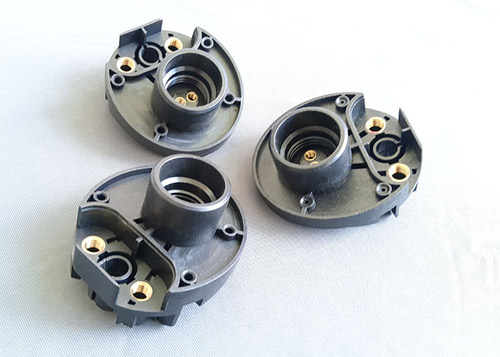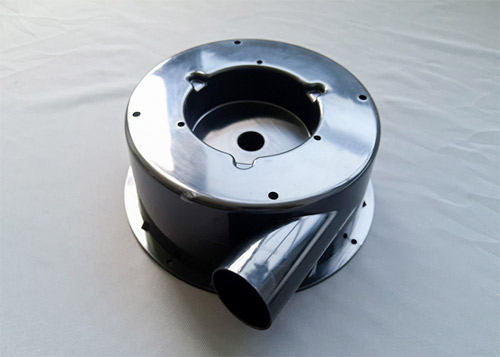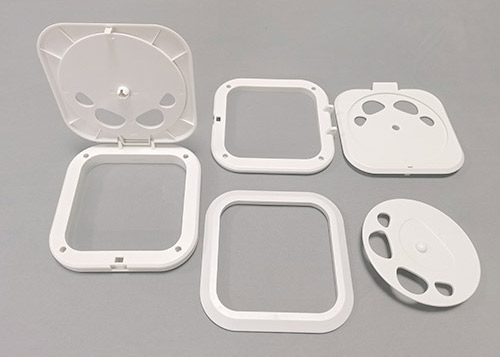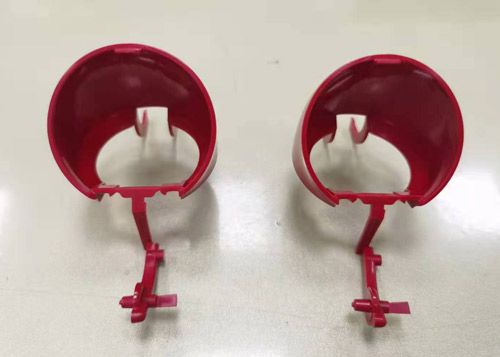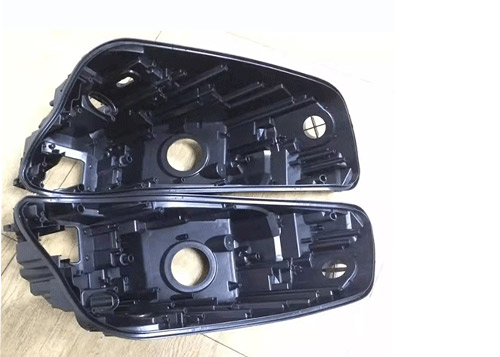Prototype Injection Molding

A custom plastic part may go through several design stages as it evolves from an idea to reality. A 2D drawing of the part provides a baseline for creating a detailed 3D CAD model rendering of the part to be manufactured. After custom plastic parts have been clearly illustrated and may seem ready for production, there may be some very good reasons to consider prototype injection molding (making injection molded prototypes) before going into mass production. The following considerations will help you in determining your prototyping needs.
Producing real injection molded prototypes are usually a good idea if your parts have functional features that require very close manufacturing tolerances or appearance features that are critical to the desired overall look of the product.
Producing real injection molded prototypes are usually a good idea if your parts have functional features that require very close manufacturing tolerances or appearance features that are critical to the desired overall look of the product.

Injection Molded Prototypes vs 3D Printed Prototypes
Recent news heavily features the advent of 3D printing technology as a solution for many prototype injection molding applications. Real world plastic injection molding can still be the best alternative for most prototyping scenarios in many cases. You should be aware of each prototyping method’s strong points to understand which is best suited for your application.
In a supporting role, 3D printing is sometimes useful to correct early design flaws and help visualize a finished product. But one clear benefit of using prototype injection molding is gaining manufacturing experience and knowledge that can be applied when starting to prepare for production . Testing the chosen production material along with the injection mold design offers the manufacturer a preview of any potential problems that may arise in future production.
In a supporting role, 3D printing is sometimes useful to correct early design flaws and help visualize a finished product. But one clear benefit of using prototype injection molding is gaining manufacturing experience and knowledge that can be applied when starting to prepare for production . Testing the chosen production material along with the injection mold design offers the manufacturer a preview of any potential problems that may arise in future production.
Prototypes With 3D Printing
● No tooling required
● Average lead times from 5 to 15 days
● Good for very low quantities
● Does not reveal real manufacturing challenges
● No tooling required
● Average lead times from 5 to 15 days
● Good for very low quantities
● Does not reveal real manufacturing challenges
Prototypes With Injection Molding
● Low cost tooling
● Average lead times from 10 to 45 days
● No quantity restrictions
● Does reveal actual manufacturing challenges
● Low cost tooling
● Average lead times from 10 to 45 days
● No quantity restrictions
● Does reveal actual manufacturing challenges
FAQ’s About Our Low Production Injection Molding Service
Why Injection Molding Prototypes?
In the development of plastic injection molded products, China Low Volume Injection Molding is a quick manufacturing process used to meet the demands of tight development timelines. It is very important for designers or engineers to detach design flaws and other issues at the design stage, reducing the risk of project failure. We also use prototype molds to test the molding process and molding with the production material, so any process- or material-based design flaws are discovered early on, saving time and money for your budget.
How long do I expect my injection molded prototype molds last?
In the process of China Low Volume Injection Molding, we usually make Prototype molds also called soft steel tooling. We usually use soft steel such as S50C or aluminum molds to make prototype molds. These tools may withstand thousands of shots from 2,000- 10,000 parts depending on the type of aluminum used, part material and geometry. The lifespan may be one year or could be stretched out over multiple years with special care. If you want more quantity over 10000 up to 50000 shots, we could use Chinese P20 to make the prototype mold as well.
How much does a prototype mold cost?
Prototype molds for China Low Volume Injection Molding can be as low as starting from 800$ depending on part geometrics, size, material, complexity, quantity, and number of cavities in the Plastic Molds. Generally, it is as little as only two-thirds the price of a steel mold due to their ability to quickly manufacture the mold and have it ready for first-part trials. At HST Mold, the core of our business is to make prototyping affordable projects for your limited budget.
How fast can we get my injection molding prototypes?
Our China low-volume injection molding service allows you to get your projects done with production-quality parts in as few as 7 business days. But again, this all depends on the complexity of your product. For injection molded prototypes, our minimum time needed from idea approval is 1-6 weeks.

Benefits Of Prototyping Plastic Parts
Rapid prototype injection molding is a preferred method that not only helps engineers and designers confirm part quality, but also delivers real-world parts that can be market-tested before designs are considered finalized. In addition to design verification and structural validation, you can use rapid prototype injection molding to help finalize tooling designs for your long term production runs. Rapid injection molding greatly benefits buyers of products with strict appearance requirements and functionality early in product launch phases. Before you spend extra on production tooling, contact Hamsan Mold for a quote rapid prototype injection molding. Other benefits of making prototype plastic parts before full scale manufacturing begins include:
1. Faster & More Reliable Product Launch: Many products fail to succeed for many reasons, including costs and price miscalculations, lack of market testing, and worst of all—product failures. Rapid prototyping and market testing can reduce these challenges before a product launch.
2. Better Product Functionality & Appearance: When products are judged aesthetically based on engineering drawings and visualizations, they often fail to impress in real-world production scenarios. You can also field-test a prototype sample for functionality and aesthetics.
3. More Efficient Design Process: A prototype can actually help shorten the overall engineering and design review phases of a new product. And, when you have a prototype plastic part in hand, you can easily convince its market viability to stakeholders.
4. Reduced Tooling Costs: When manufacturers don’t prototype, they often have to rework their production tooling. If you opt for rapid prototype injection molding, you’ll find and address any challenges before you make expensive production molds.
Our Injection Molding Prototype Parts
Simple to complex and small to large parts. Hamsan’s customers come from all walks of life around the world. The processed products cover the medical equipment industry, auto parts industry, aviation and shipping industry, industrial machinery manufacturing, electronic and electrical manufacturing, fitness equipment industry, etc.

